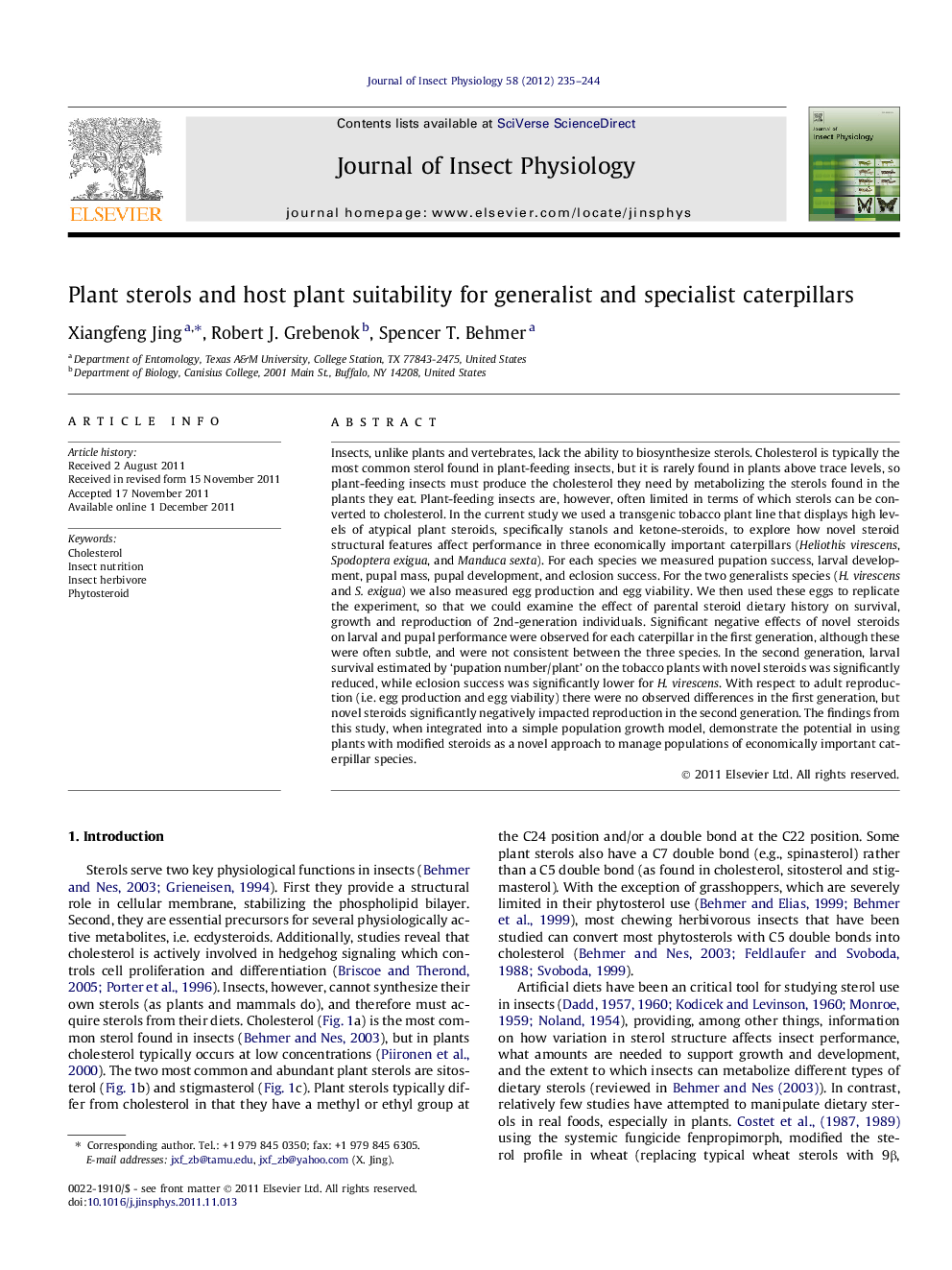| کد مقاله | کد نشریه | سال انتشار | مقاله انگلیسی | نسخه تمام متن |
|---|---|---|---|---|
| 5922131 | 1165349 | 2012 | 10 صفحه PDF | دانلود رایگان |

Insects, unlike plants and vertebrates, lack the ability to biosynthesize sterols. Cholesterol is typically the most common sterol found in plant-feeding insects, but it is rarely found in plants above trace levels, so plant-feeding insects must produce the cholesterol they need by metabolizing the sterols found in the plants they eat. Plant-feeding insects are, however, often limited in terms of which sterols can be converted to cholesterol. In the current study we used a transgenic tobacco plant line that displays high levels of atypical plant steroids, specifically stanols and ketone-steroids, to explore how novel steroid structural features affect performance in three economically important caterpillars (Heliothis virescens, Spodoptera exigua, and Manduca sexta). For each species we measured pupation success, larval development, pupal mass, pupal development, and eclosion success. For the two generalists species (H. virescens and S. exigua) we also measured egg production and egg viability. We then used these eggs to replicate the experiment, so that we could examine the effect of parental steroid dietary history on survival, growth and reproduction of 2nd-generation individuals. Significant negative effects of novel steroids on larval and pupal performance were observed for each caterpillar in the first generation, although these were often subtle, and were not consistent between the three species. In the second generation, larval survival estimated by 'pupation number/plant' on the tobacco plants with novel steroids was significantly reduced, while eclosion success was significantly lower for H. virescens. With respect to adult reproduction (i.e. egg production and egg viability) there were no observed differences in the first generation, but novel steroids significantly negatively impacted reproduction in the second generation. The findings from this study, when integrated into a simple population growth model, demonstrate the potential in using plants with modified steroids as a novel approach to manage populations of economically important caterpillar species.
Highlights⺠We examine how novel plant steroid profiles affect three lepidopteran species. ⺠In two of these species we also follow effects through the second generation. ⺠The negative effects of novel steroids are most apparent in the second generation. ⺠A simple model, using our data, projects novel steroids affects for populations. ⺠Our results show the potential of controlling caterpillar pests using novel steroids.
Journal: Journal of Insect Physiology - Volume 58, Issue 2, February 2012, Pages 235-244